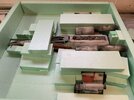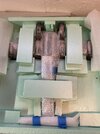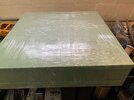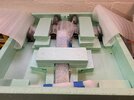The time is getting close for us to move across country, and the question is, what’s the best way to move built models?
I have 6 built studio scale X-wings, and a built Y-wing (plus a bunch of other stuff) to safely get from New Jersey to Texas. Hopefully without destroying anything.
I have built transport cradles for the x-wings out of foam. They are locked into the cradles, and don’t move around. They are wrapped in bubble wrap and foam paper, which is (mostly) omitted from the pics.
The plan is to stack them inside a wardrobe box that’s padded with open cell foam to cushion them. I should be able to get 3 x-wings per wardrobe box.
Should I have the moving company move the box, or should I ship it via UPS/FedEx to my new house?
Here’s what I’ve built, let’s see what you guys think, and I welcome your thoughts, ideas, and experience!!!
I have 6 built studio scale X-wings, and a built Y-wing (plus a bunch of other stuff) to safely get from New Jersey to Texas. Hopefully without destroying anything.
I have built transport cradles for the x-wings out of foam. They are locked into the cradles, and don’t move around. They are wrapped in bubble wrap and foam paper, which is (mostly) omitted from the pics.
The plan is to stack them inside a wardrobe box that’s padded with open cell foam to cushion them. I should be able to get 3 x-wings per wardrobe box.
Should I have the moving company move the box, or should I ship it via UPS/FedEx to my new house?
Here’s what I’ve built, let’s see what you guys think, and I welcome your thoughts, ideas, and experience!!!




